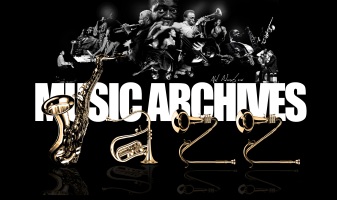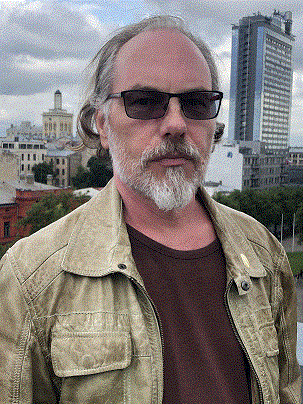
 |
Robert Freeman obituary |
Post Reply 
|
| Author | |
snobb 
Forum Admin Group 

Site Admin Joined: 22 Dec 2010 Location: Vilnius Status: Offline Points: 28466 |
 Post Options Post Options
 Thanks(0) Thanks(0)
 Quote Quote  Reply Reply
 Topic: Robert Freeman obituary Topic: Robert Freeman obituaryPosted: 19 Nov 2019 at 9:43am |
Robert Freeman obituary
Photographer and film director best known for his covers of Beatles albums including Help! and A Hard Day’s Night The photographer and film director Robert Freeman, who has died of pneumonia aged 82, found enduring fame in the 1960s through his work with the Beatles, shooting the cover photographs for some of their most significant albums including A Hard Day’s Night and Rubber Soul. He also photographed other towering names in music and showbusiness, including Charlton Heston, Andy Warhol, Sophia Loren, Muhammad Ali and Penélope Cruz, and took memorable portraits of jazz musicians including Dizzy Gillespie, Cannonball Adderley and John Coltrane. Although the Beatles connection ensured his name became widely known, Freeman had a broad intellect through which he explored a variety of creative disciplines. A compulsive traveller, he had a panoramic knowledge of music, from Debussy and musique concrète to modern jazz and music from Cuba and South America (though ironically, he was never a diehard Beatles fan). He was fascinated by architecture, and devoured literature from Goethe to Cervantes to Rilke. He also pursued a successful career as a director of commercials, and directed the feature films The Touchables (1968) and Secret World (1969). Before meeting the Beatles in 1963, Freeman had worked as a photographer for two years, contributing to the Sunday Times and other magazines. He had just photographed the Soviet premier Nikita Khrushchev at the Kremlin, and had shot the first-ever Pirelli calendar (published in 1964), through which he met his first wife, the German-born model Sonny Drane (originally Sonnhild Spielhagen). They had a son, Dean, and a daughter, Janine. His first commission for the Beatles came through their manager Brian Epstein,
after Freeman had sent him a selection of his atmospherically
monochrome photographs of jazz musicians. “My favourite assignment
during that period was photographing John Coltrane and other jazz
musicians at a festival in London,” Freeman later recalled. “It was
photographs of these musicians that I later showed to the Beatles.” Epstein arranged for him to meet the group in Bournemouth, where they were playing a string of dates at the Gaumont cinema. This coincided with a request from their producer George Martin, who needed a cover photo for the Beatles’ forthcoming second album. Epstein asked Freeman to arrange a photoshoot, and the photographer was able to bargain the proffered £25 fee up to £75. “Since the photograph was needed urgently, I had to improvise a studio situation in the hotel,” Freeman wrote in his book The Beatles: A Private View (2003). “They came down at midday wearing their black polo-necked sweaters. It seemed natural to photograph them in black and white wearing their customary dark clothes.” The session, on 22 August 1963, produced the imposing cover shot for the album With the Beatles, with the foursome’s faces side-lit by natural daylight and half in shadow, and Ringo Starr placed below the other three to make the composition fit the square format of an LP cover. Though the session took barely half an hour, Freeman’s image lent the group a knowing, arthouse aura, setting them apart from the cheesy frivolity of their competitors. Freeman became the group’s friend and confidant, travelling on tour with them to America and going on to shoot covers for their albums A Hard Day’s Night, Beatles For Sale, Help! and Rubber Soul. The stretched, druggy-looking image on the last of these was created by accident when the card on to which Freeman was projecting it slid backwards and distorted the picture. John Lennon and his wife Cynthia moved into a London flat upstairs from Freeman and Sonny in Emperor’s Gate, South Kensington, and Freeman designed the artwork for Lennon’s books In His Own Write and A Spaniard in the Works. It was suggested by Philip Norman in his Lennon biography (2009) that Lennon had an affair with Sonny, alluded to (in coded form) in Lennon’s song Norwegian Wood. Freeman was born in West Wickham, greater London, to Freddy Freeman, an insurance broker for London theatres, and his wife, Dorothy (nee Jaycock). He attended Ardingly college in Sussex, and then went to Clare College, Cambridge, to study modern languages. He edited the university magazine, which published some of his early black and white photographs, and also pursued his interest in architecture. Attending lectures by the architectural historian Nikolaus Pevsner helped to shape his thinking about the relationship between space and light. Much as the Beatles connection assisted him, it also typecast him, and Freeman came to regard it as “a yoke”, according to his second wife, Tiddy Rowan. He moved into film directing, making the short, surreal film Greetings, Mary Ann! (1966) with a screenplay by Paul Ableman. This was never widely distributed, but Freeman achieved greater visibility with The Touchables, a crime-drama scripted by Ian La Frenais from a story by Donald Cammell (who would make Performance, 1970, with Nic Roeg). The story involved a Swinging London pop idol being kidnapped by female fans and incarcerated in a plastic dome. Freeman followed up by directing Secret World, starring Jacqueline Bisset with cinematography by Peter Biziou, who later worked on Mississippi Burning (1988), Monty Python’s Life of Brian (1979) and other major productions. Then Freeman began working on TV commercials with Hugh Hudson and his brilliantly innovative film company Cammell Hudson & Brownjohn. Among numerous highlights, Freeman was cameraman on The Tortoise and the Hare (1966), a 37-minute film promoting Pirelli Cinturato tyres. It starred the model Liz Allsop driving an E-Type Jaguar across Italy, and won a prize at the Venice film festival. The marriage to Sonny ended in divorce; in 1976 Freeman met Tiddy, and married her the following year. She accompanied him to New York when he was invited by John Hejduk, the dean of architecture at the Cooper Union, to deliver a lecture on “architectonics”, Hejduk having been impressed by Freeman’s exploitation of architectural styles in Secret World. In 1978 the couple moved to Hong Kong, following an invitation to spend six months there shooting commercials. They started Freeman Films, with Tiddy producing and Freeman directing, making films for prestigious clients including Heineken, Cartier, Mercedes and Cathay Pacific in locations across Europe and the far east. After the birth of their child, Holly, they parted company, with Tiddy returning with her to the UK, while Freeman moved to Spain. They divorced in 1991. In 2013, Snap Galleries in London staged an exhibition of Freeman’s photography. The following year he was visiting his sister Jean in the UK when he suffered a severe stroke. After lengthy hospital treatment he recovered sufficiently to move into a flat overlooking Battersea Park, where he began taking pictures again after a gap of several years. He was supported by Holly and his son, Dean, and as Tiddy put it, “he and I became good friends again, so it was very happy for both of us. He also regained his dry sense of humour, which had been paramount through his life.” He is survived by his daughters, Holly and Janine, his son, Dean, sister, Barbara, six grandchildren and a great-grandson. • Robert Grahame Freeman, photographer and film director, born 5 December 1936; died 6 November 2019 from www.theguardian.com Edited by snobb - 19 Nov 2019 at 9:43am |
|
 |
|
Post Reply 
|
|
|
Tweet
|
| Forum Jump | Forum Permissions  You cannot post new topics in this forum You cannot reply to topics in this forum You cannot delete your posts in this forum You cannot edit your posts in this forum You cannot create polls in this forum You cannot vote in polls in this forum |